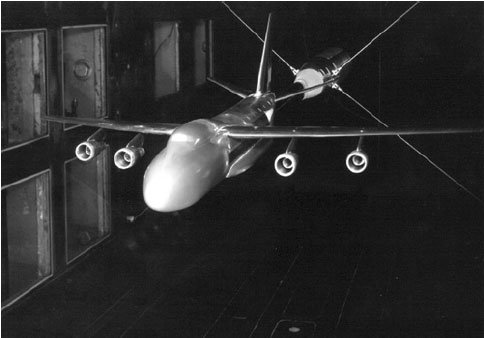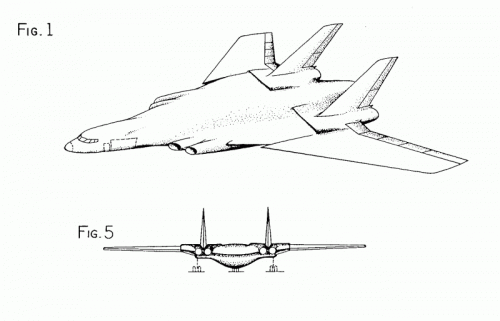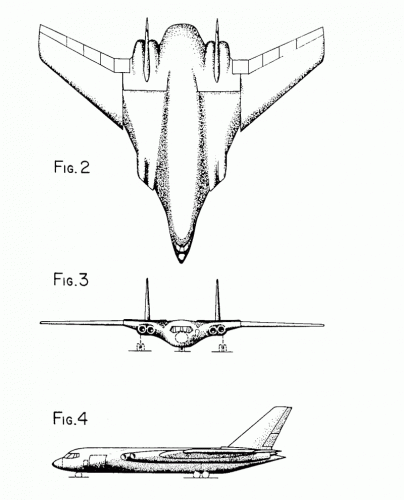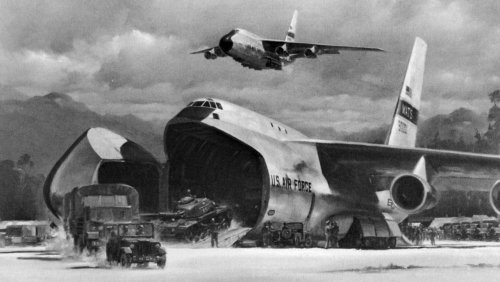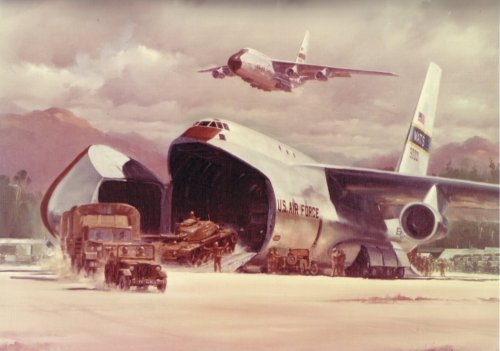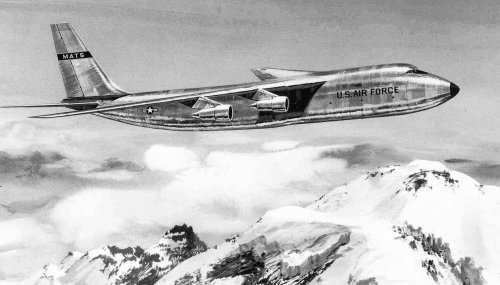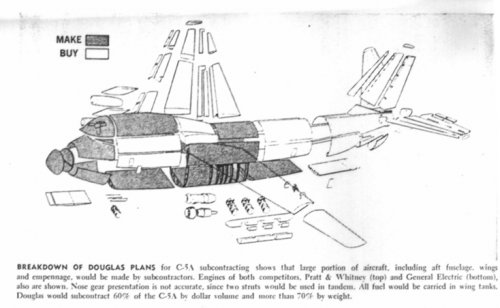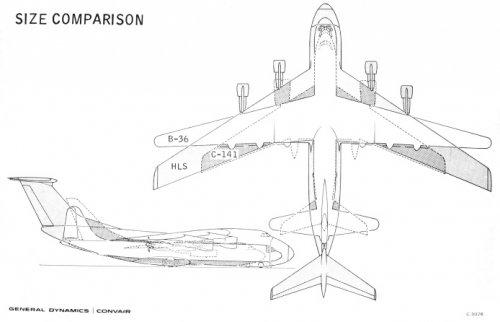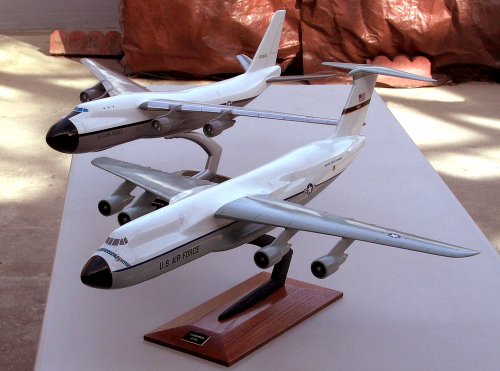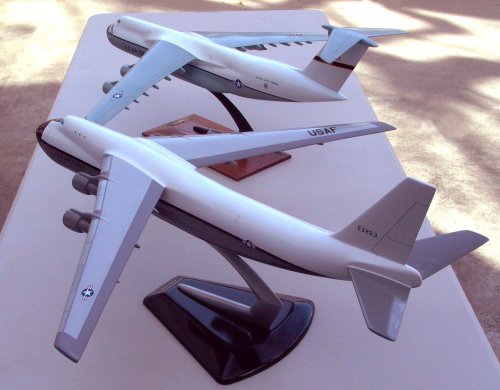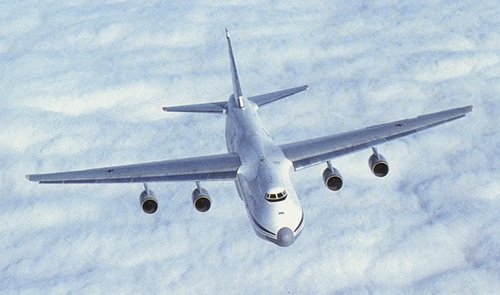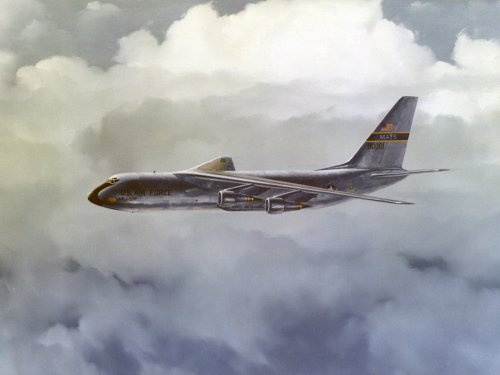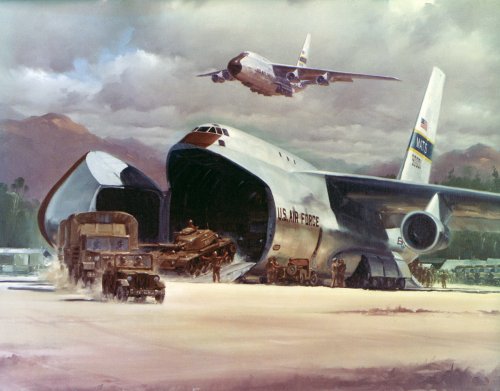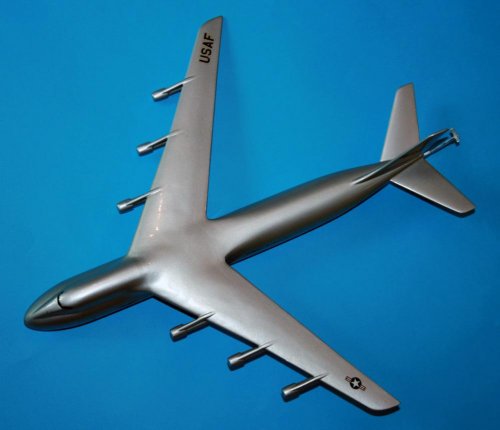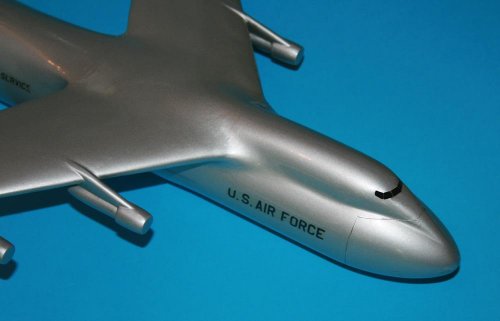I should note that the Boeing CX-HLS has little to do with the later built B-747. The JT9D, though, to my knowledge was actually the loser in the CX-HLS program (engines). The reason it ended up powering the 747 was because it was better suited for the higher-speed requirements Pan Am requested from Boeing (Mach 0.88 cruise) than the TF-39 (who's 8:1 bypass ratio makes it difficult to achieve).
When Boeing began it's early design studies for what would become the B-747, they initially used double-decker proposals of 707 width. To my knowledge they may have widened one of the decks a bit and moved the wings from the top to the middle to the bottom along the way. Joe Sutter, the project leader decided against it.
With the SST program still going strong, they felt that the B-747 would work okay at first, but then would quickly be replaced by SST's especially on domestic routes. They felt the B-747, especially on domestic routes would end up being a just a freighter. So they designed the airplane in such a way that it could be quickly configured into a freighter.
They designed the airplane with a wide-circular fuselage that could fit two 8-foot wide cargo pallets side by side. While they had considered swing-tailed designs, and hinged noses to allow cargo to be loaded straight in through the front, the latter was the choice they ultimately went with. The cockpit was placed above and behind the hinge-line, and was aerodynamically blended and faired into the fuselage.
KJ Lesnick


